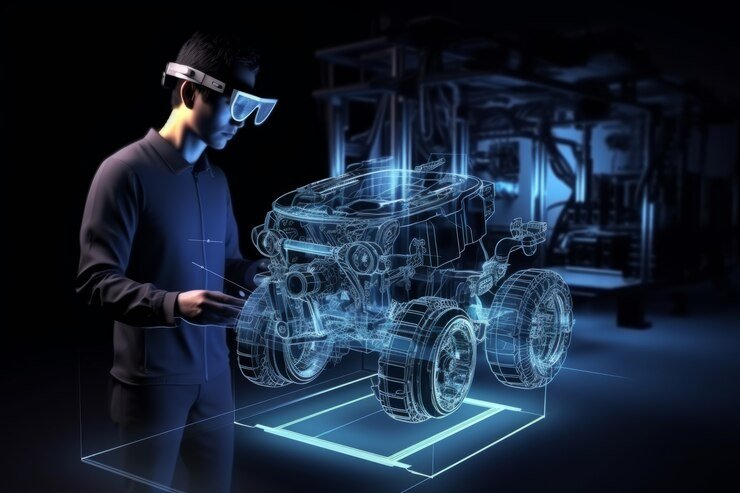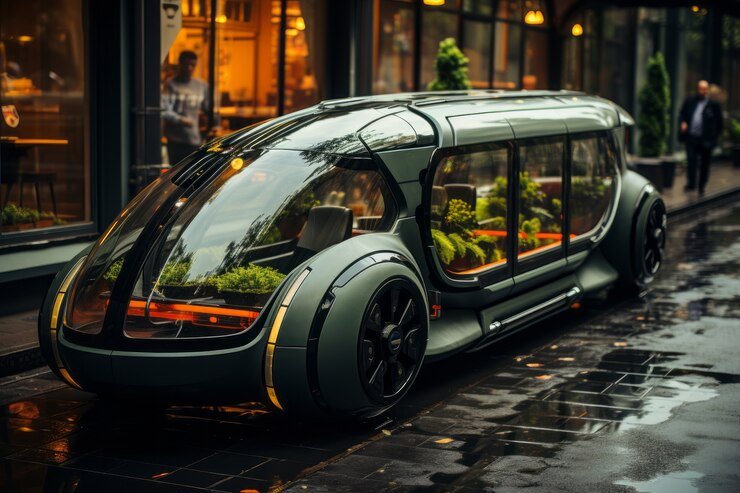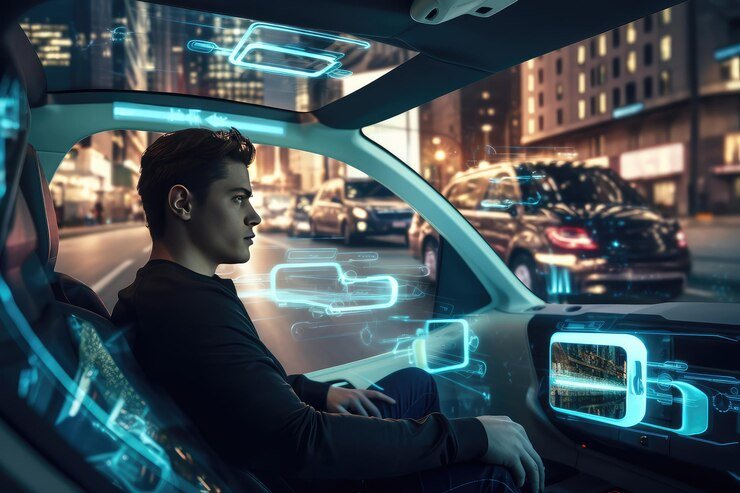Self-driving vehicles used to be science fiction, but now they’re rolling onto our streets in real life. At the heart of this revolution is artificial intelligence (AI)—the brain that makes autonomous vehicles think, learn, and act. So, what exactly is the role of AI in shaping the future of self-driving vehicles? Buckle up, because we’re about to dive into the fascinating world where cars don’t just drive — they decide.
Understanding the Core of Self-Driving Tech
Levels of Autonomy (SAE Levels 0-5)
Not all self-driving vehicles are created equal. The Society of Automotive Engineers (SAE) defines six levels of driving automation:
- Level 0: No automation.
- Level 1-2: Driver assistance (like cruise control).
- Level 3-4: Partial to high automation, but a human can take over.
- Level 5: Fully autonomous — no steering wheel needed.
Key Technologies That Power Autonomous Cars
To “see” the world, self-driving cars rely on:
- Sensors: Detect nearby objects and monitor surroundings.
- Lidar & Radar: Lidar maps out distances using light pulses; radar tracks speed and distance in all weather.
- Cameras: Provide visual recognition for signs, lanes, pedestrians, and more.
The Role of Artificial Intelligence in Self-Driving Vehicles

Machine Learning & Deep Learning in Action
AI uses machine learning (ML) to interpret massive amounts of data and deep learning to recognize patterns. Think of it like training a toddler — show it enough cats, and it’ll eventually learn what a cat looks like.
Real-Time Decision Making and Route Planning
AI doesn’t just react — it anticipates. It calculates the best route based on
- Traffic conditions
- Obstacle detection
- Route history
- User preferences
Object Detection and Scene Interpretation
AI breaks down a scene like a puzzle:
- Identifies people, cars, bikes, and traffic lights
- Analyzes motion patterns
- Predicts what other drivers might do
AI-Powered Features in Modern Vehicles
Before full autonomy, many of today’s cars already use AI for:
- Adaptive Cruise Control
- Lane-Keeping Assistance
- Automatic Emergency Braking
- Traffic Sign Recognition
These features reduce driver fatigue and prevent minor to serious accidents.
Benefits of AI in Self-Driving Cars
Reducing Human Error
AI doesn’t text, drink, or get tired. Around 90% of road accidents are caused by human error — AI aims to change that.
Enhancing Traffic Flow and Fuel Efficiency
AI coordinates traffic better than humans ever could, easing congestion and reducing fuel waste.
Accessibility for People with Disabilities
For individuals who can’t drive due to age, vision, or disability, AI-driven cars are game-changers.
Time-Saving and Convenience
Multitasking during your commute? With self-driving cars, it’s not just possible — it’s expected.
Challenges Faced by AI in Autonomous Driving
Edge Case Scenarios and Unexpected Events
What happens when a deer jumps out of nowhere? Or a traffic cop overrides a signal? These “edge cases” are the ultimate tests for AI.
Data Privacy and Security Risks
AI systems collect tons of data. Protecting it from hacks or misuse is crucial.
Weather and Lighting Limitations
Rain, snow, fog, or dark tunnels can still confuse even the smartest sensors and algorithms.
Ethical Dilemmas in Crash Situations
Who should the car save — the passenger or the pedestrian? These questions aren’t just technical; they’re moral minefields.
The Training Process of AI in Autonomous Systems

Data Collection and Labeling
It all starts with collecting data — millions of driving hours from real roads and simulations.
Simulation-Based Learning
AI is trained in simulated environments that mimic real-world chaos, from jaywalkers to detour signs.
Continuous Learning from Real-World Driving
Every drive teaches the AI something new — it’s like a driver that never stops improving.
Real-World Applications and Testing
Companies Leading the Way
- Tesla, with its Autopilot and Full Self-Driving (FSD)
- Waymo, owned by Alphabet (Google’s parent company)
- Cruise, backed by GM
Citywide Testing and Smart City Integration
Pilot programs are live in places like
- Phoenix, Arizona
- San Francisco
- Beijing
Case Studies of AI in Action
Waymo One, the world’s first robotaxi service, is already taking paying customers.
Regulations and Legal Frameworks
Government Policies and Safety Guidelines
Different regions have varying laws. The U.S. is state-by-state; Europe is pushing centralized regulation.
Insurance and Liability Concerns
If an AI-driven car crashes, who’s responsible? The maker, the user, or the software provider?
The Global Perspective
- Europe: Focus on safety and data rights
- USA: Innovation-friendly but fragmented
- Asia: Rapid tech integration, especially in China and Japan
The Future of Work and AI in Transportation
Impact on Driving Jobs
Taxi, truck, and delivery drivers may face job displacement.
New Jobs in AI Development
But there’s a silver lining — new roles in AI monitoring, ethics, simulation, and maintenance.
Reskilling and Workforce Transition
Governments and industries must support retraining efforts to prevent mass unemployment.
How AI Will Shape Urban Planning
Cities of the future will cater to self-driving cars by
- Designing smart roads
- Using AI to manage traffic flows
- Building car-to-infrastructure networks (V2X)
Integration with Other Emerging Technologies
- 5G: Enables real-time data transmission
- Edge Computing: Reduces lag by processing data near the car
- Blockchain: Secures ride logs, transactions, and data sharing
Public Perception and Adoption Barriers
Trust and Transparency
People need to trust AI before handing over control.
Cost and Accessibility
Will autonomous vehicles be affordable for the average person?
Education and Awareness
The more people know, the more they’ll accept the change.
What the Next Decade Looks Like

By 2030, expect:
- Fleets of robotaxis in major cities
- AI-powered long-haul trucks
- Near-zero accident rates (hopefully!)
AI won’t just improve driving — it will redefine transportation itself.
Conclusion
AI isn’t just a tool in the self-driving revolution — it’s the engine behind it. From real-time decisions to long-term safety gains, artificial intelligence is turning a wild dream into a practical reality. The Future of Self-driving vehicles hinges on AI’s ability to navigate complex environments and adapt to ever-changing road conditions. Sure, there are challenges to tackle — legal, ethical, and technical — but the road ahead is paved with incredible potential.
Visit our Quoraprofile to get more updates and tips.
FAQs
1. What AI Technologies Are Used in Self-Driving Cars?
They include machine learning, computer vision, sensor fusion, deep learning, and natural language processing.
2. Will Self-Driving Cars Be Safer Than Human Drivers?
That’s the goal! AI doesn’t make emotional decisions or get distracted, reducing the chances of accidents.
3. How Soon Will We See Fully Autonomous Cars?
Probably within the next 5–10 years in urban zones, depending on tech readiness and regulation.
4. Can AI Handle Complex Urban Driving?
It’s improving daily. Many systems now handle city traffic, but human oversight is still required in many places.
5. What Happens if the AI in a Car Fails?
Most cars are built with redundancy systems and human takeover options in case of AI failure.

